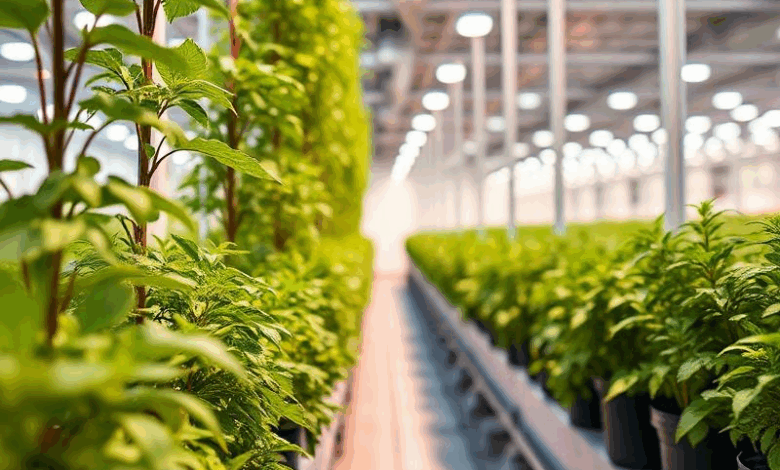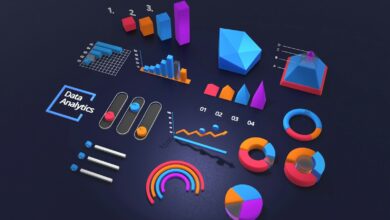Vertical farming – agriculture technology opportunities

Integrating stacked cultivation systems within controlled environments enables year-round production with up to 90% less water usage compared to traditional fields. This method reduces land footprint by utilizing vertical space, addressing urban land scarcity and minimizing transportation emissions through localized growth hubs.
Utilizing automated climate control, LED lighting tailored to plant photoreceptors, and nutrient delivery optimization enhances crop yield per square meter by over 200%. These innovations support consistent quality and supply chain resilience despite external weather fluctuations or soil degradation.
Adopting these modern growing solutions offers pathways to meet increasing global food demand while prioritizing resource efficiency and reducing pesticide reliance. Businesses investing in such systems can capitalize on rising consumer preference for fresh, traceable produce with a lower environmental impact.
Investment Insights: Indoor Crop Cultivation Advancements and Market Potential
Allocating capital into stacked plant production systems offers a quantifiable route to address urban food supply challenges while targeting scalable returns. Current data from industry reports indicate that controlled environment agriculture (CEA) can reduce water consumption by up to 95% compared to traditional open-field methods, enhancing resource allocation efficiency. Investors should consider enterprises leveraging modular indoor structures combined with LED lighting arrays, which optimize photosynthetic activity and allow year-round output independent of climatic variability.
Operational efficiency gains arise from multi-tiered cultivation setups that maximize spatial utilization within urban real estate footprints. For example, AeroFarms’ patented aeroponic systems demonstrate a yield increase factor of 390 times per square foot annually versus conventional soil-based approaches. This intensification translates into compelling unit economics and justifies premium valuations for companies integrating sensor-driven environmental controls with AI-based growth analytics.
Technological Innovations Driving Sustainable Urban Crop Production
Emerging advancements in automated nutrient delivery and climate regulation systems contribute significantly to reducing energy expenditure without compromising biomass quality. Data from research trials reveal energy consumption drops of approximately 30% when adaptive machine learning models adjust lighting spectra and irrigation schedules in real time. Such breakthroughs enable operators to align operational costs with sustainability metrics, appealing to ESG-focused investors seeking long-term value creation.
Furthermore, integration of blockchain-enabled traceability platforms enhances transparency across the supply chain, ensuring provenance verification and reducing fraud risk. Projects utilizing distributed ledger technology facilitate immutable recording of growth conditions, harvest timestamps, and distribution logistics, thereby increasing consumer trust and enabling premium pricing strategies for sustainably produced goods.
- Case Study: Infarm’s partnership with major retailers incorporates IoT-enabled vertical modules connected via blockchain networks to provide end-to-end product lifecycle visibility.
- Market Trend: Global market projections estimate a compound annual growth rate (CAGR) exceeding 24% over the next five years for indoor stacked crop solutions.
- Regulatory Context: Urban zoning reforms in multiple jurisdictions now support multi-layered crop cultivation facilities, unlocking new development pipelines for agri-tech ventures.
The convergence of these innovations signals that investments directed toward sophisticated indoor crop production can achieve dual objectives: accelerating sustainable practices while delivering attractive financial performance. Nonetheless, comprehensive due diligence must assess factors such as scalability constraints, energy sourcing mixes, and integration readiness within existing food distribution frameworks. Strategic portfolio inclusion of firms pioneering these methodologies positions investors advantageously amid shifting consumer preferences towards locally sourced and environmentally responsible produce.
In conclusion, capital deployment into advanced enclosed plant-growing operations represents a pragmatic approach aligned with global sustainability targets and urbanization trends. Monitoring technological maturation alongside evolving policy incentives will remain critical to optimizing investment timing and maximizing returns. Stakeholders adopting multi-disciplinary evaluation criteria stand to capitalize on this transformative segment poised at the intersection of innovation and necessity.
Cost components in vertical farms
Energy consumption constitutes the largest operational expense in indoor crop production facilities. Lighting systems, predominantly LED fixtures tailored for plant photosynthesis, can account for up to 50-70% of total energy costs. For example, a medium-scale grow operation utilizing high-efficiency LEDs may incur monthly electricity expenses exceeding $10,000 depending on location and scale. Optimizing light schedules and integrating renewable energy sources are pivotal strategies to reduce this financial burden while maintaining growth rates.
Infrastructure investment forms a significant portion of initial capital expenditure. Multi-tiered shelving units, climate control mechanisms including HVAC systems, humidity regulators, and automated nutrient delivery setups require substantial upfront funding. Industry reports indicate that build-out costs for advanced controlled environment systems range from $100 to $300 per square foot. This figure varies with technological sophistication and local construction costs but remains critical for ensuring consistent environmental parameters conducive to year-round cultivation.
Labor costs differ notably from traditional open-field operations due to higher automation levels in these indoor environments. While mechanized planting, harvesting, and monitoring reduce manual intervention, skilled technicians are necessary to manage system calibration and troubleshoot equipment. According to case studies from leading providers in Japan and the Netherlands, labor expenses constitute approximately 15-25% of operating budgets but benefit from improved workforce efficiency through integrated sensor networks and AI-driven analytics.
The water management subsystem also impacts overall cost structure significantly. Closed-loop hydroponic or aeroponic setups minimize water usage by recycling nutrient solutions; however, initial investments in filtration and sterilization technology add complexity and expense. Studies demonstrate that water consumption can be reduced by up to 90% compared to conventional soil farming, translating into lower utility bills but necessitating rigorous maintenance protocols that contribute indirectly to ongoing expenditures.
- Nutrient inputs: Precision dosing of macro- and micronutrients tailored per crop cycle enhances yield consistency but requires specialized reservoirs and monitoring devices.
- Environmental controls: Advanced sensors regulating CO₂ levels, temperature fluctuations, and air circulation enhance plant health yet increase system complexity and upkeep needs.
Maintenance overheads encompass both routine servicing of mechanical components and software updates for integrated control platforms. Predictive maintenance leveraging IoT data streams reduces unexpected downtime but demands investment in data analytics infrastructure. Financial models suggest allocating 5-10% of annual operational budgets towards upkeep ensures sustainable performance without compromising output quality or resource efficiency over time.
Energy Consumption and Savings in Indoor Crop Production Systems
Maximizing energy efficiency is critical for multi-layered crop cultivation environments due to their intensive use of artificial lighting and climate control systems. Recent studies demonstrate that integrating LED lighting with dynamic spectral tuning reduces electricity demand by up to 40% compared to traditional high-pressure sodium lamps. This adaptation directly lowers operational costs while maintaining optimal photosynthetic rates, enhancing resource utilization within enclosed growing spaces.
Climate regulation technologies such as heat recovery ventilation and precision humidity controls contribute significantly to minimizing energy wastage. For instance, a commercial pilot project employing these methods reported a 30% reduction in HVAC-related power consumption over a 12-month period. Such innovations not only address the substantial heating and cooling loads inherent to indoor environments but also advance sustainability by curtailing carbon emissions associated with grid electricity usage.
Incorporating renewable power sources like onsite solar arrays or wind turbines offers measurable benefits for energy autonomy in stacked crop production facilities. Case analyses reveal facilities utilizing hybrid renewable setups achieve an average of 25-35% grid energy offset, depending on geographic location and system scale. This transition supports long-term economic resilience by mitigating exposure to fluctuating fossil fuel prices and regulatory changes targeting greenhouse gas output.
The convergence of automated monitoring systems with machine learning algorithms enables continuous optimization of energy consumption patterns. Data-driven approaches allow adaptive scheduling of lighting cycles, nutrient delivery, and environmental parameters tailored to plant growth stages, reducing unnecessary power expenditure. As a result, these advanced control frameworks foster enhanced productivity alongside significant reductions in overall energy footprints within compact agricultural infrastructures.
Crop selection for vertical systems
Choosing crops that maximize spatial use and growth cycles is fundamental to optimizing indoor cultivation setups. Leafy greens such as lettuce, spinach, and kale demonstrate rapid maturation times–typically between 30 to 45 days–and thrive under controlled lighting conditions, enabling multiple harvests annually. These plants exhibit high yield per square meter ratios, supporting enhanced productivity compared to traditional soil-based methods.
Herbs including basil, mint, and cilantro also present significant potential due to their compact size and relatively low nutrient demands. Their short growing periods align well with automated nutrient delivery systems, reducing resource consumption while maintaining consistent quality. Case studies from commercial installations reveal that integrating these species can increase turnover rates by up to 40% without compromising system stability.
Optimizing plant varieties for confined environments
Fruit-bearing crops such as strawberries and cherry tomatoes require precise environmental regulation but offer substantial returns when adapted appropriately. Advances in photoperiod management allow these plants to produce fruit year-round within stacked configurations, albeit with increased energy expenditures for supplemental lighting. Technical assessments suggest balancing light intensity with spectral composition improves photosynthetic efficiency and fruit yield.
Root vegetables like radishes and baby carrots present additional considerations related to substrate depth and aeration. Modifications in soilless media formulations have enabled successful cultivation within shallow trays, though scalability remains limited due to spatial constraints inherent in multi-layered units. Experimental data indicate that combining hydroponic techniques with aeroponic misting enhances root development while conserving water usage.
The integration of fast-growing microgreens adds diversity and economic viability to enclosed horticultural systems. Their brief growth cycle–often under two weeks–and minimal space requirements translate into accelerated cash flow opportunities. Analytical models highlight the role of LED spectral tuning in boosting germination rates and phytochemical content, thereby elevating product value on competitive markets.
Sustainability metrics tied to crop selection emphasize the reduction of resource inputs relative to output mass. Selecting cultivars adaptable to closed-loop nutrient recycling minimizes waste generation and energy demand associated with climate control mechanisms. Ongoing trials demonstrate that tailored environmental parameters combined with selective breeding can further enhance resilience against pests and diseases without reliance on chemical interventions.
Automation Impact on Yield
Integrating automated systems within controlled environment agriculture significantly increases crop productivity by optimizing resource allocation and minimizing human error. Studies indicate that precision-controlled environments, enhanced with robotics and sensor networks, can boost yields by up to 30% compared to conventional indoor cultivation methods. Automated nutrient delivery, combined with real-time monitoring of plant health metrics, allows for tailored growing conditions that maximize photosynthetic efficiency and reduce waste.
Robotic automation facilitates continuous operation cycles without the constraints of labor availability or inconsistencies inherent in manual farming practices. For example, automated harvesting machines equipped with advanced computer vision enable selective picking that preserves plant integrity while accelerating throughput. Case analyses from commercial facilities demonstrate yield improvements alongside reduced operational costs, evidencing a direct correlation between mechanization level and production volume.
Technological Mechanisms Enhancing Productivity
Automated climate control systems maintain optimal temperature, humidity, and CO2 concentrations based on crop-specific requirements. Integration with AI-driven predictive models forecasts environmental shifts and adjusts parameters preemptively, preventing stress-induced yield losses. Additionally, robotic planting platforms ensure uniform seed spacing and depth accuracy critical for consistent germination rates.
- Sensors measuring soil moisture and nutrient levels enable feedback loops for precise irrigation and fertilization.
- Machine learning algorithms optimize light spectra delivered via LED arrays to accelerate vegetative growth phases.
- Automated pest detection systems reduce chemical usage through targeted interventions rather than blanket treatments.
The synergy of these technologies supports sustainable cultivation by conserving water–up to 90% less than traditional open-field methods–and reducing energy consumption per unit yield. Such advancements are crucial as urban agricultural hubs expand their footprint while striving for eco-efficient output.
The scalability of automated systems also opens avenues for diversified crop portfolios within limited spaces. Pilot projects employing modular growing units demonstrate increased harvest frequency due to shortened growth cycles achieved through fine-tuned environmental controls. This adaptability not only enhances food security but also introduces economic resilience against fluctuating market demands.
Market trends and funding sources in indoor cultivation systems
Investment flows into indoor crop production solutions are increasingly directed towards projects demonstrating measurable gains in resource efficiency and environmental impact reduction. Data from Q1 2024 shows a 35% year-over-year increase in venture capital targeting startups that optimize light spectrum management and water recycling within multi-layered plant growth environments. This signals a shift towards funding models prioritizing scalable designs with proven energy consumption metrics below industry benchmarks.
Looking ahead, integrating blockchain-based supply chain traceability enhances transparency for stakeholders, attracting institutional capital seeking sustainable portfolios. Tokenized asset structures linked to yield performance could redefine financing by aligning investor returns directly with operational output, thus mitigating traditional risk factors associated with novel cultivation methods.
Analytical synthesis of emerging financial dynamics
- Efficiency-driven innovation: Advanced LED arrays coupled with AI-controlled nutrient delivery systems reduce input waste by up to 40%, which appeals to growth-oriented investors focused on maximizing output per square meter in confined spaces.
- Regulatory impact: Progressive policies incentivizing carbon footprint reductions accelerate adoption of closed-loop horticulture models, creating fertile ground for green bonds and sustainability-linked loans.
- Diversification of capital sources: Crowdfunding platforms tailored to agricultural ecosystems are gaining traction, democratizing access while enabling agile project scaling without reliance solely on traditional VC funds.
- Data monetization opportunities: Real-time analytics generated during the growing cycle can be licensed or sold, adding ancillary revenue streams that enhance enterprise valuation during funding rounds.
The convergence of these financial mechanisms underlines a transformative phase where indoor cultivation is not only a solution for space-constrained food production but also a compelling sector for strategic capital deployment. Stakeholders must evaluate the interplay between technical efficiency gains and evolving regulatory frameworks to position investments advantageously within this expanding niche.
A proactive approach entails monitoring innovations that enhance system integration and reduce operational complexity, thereby accelerating adoption curves globally. As sustainability mandates tighten, the capacity to deliver consistent yields with minimized ecological footprints will dictate competitive differentiation and long-term funding viability across the controlled-environment produce sector.






